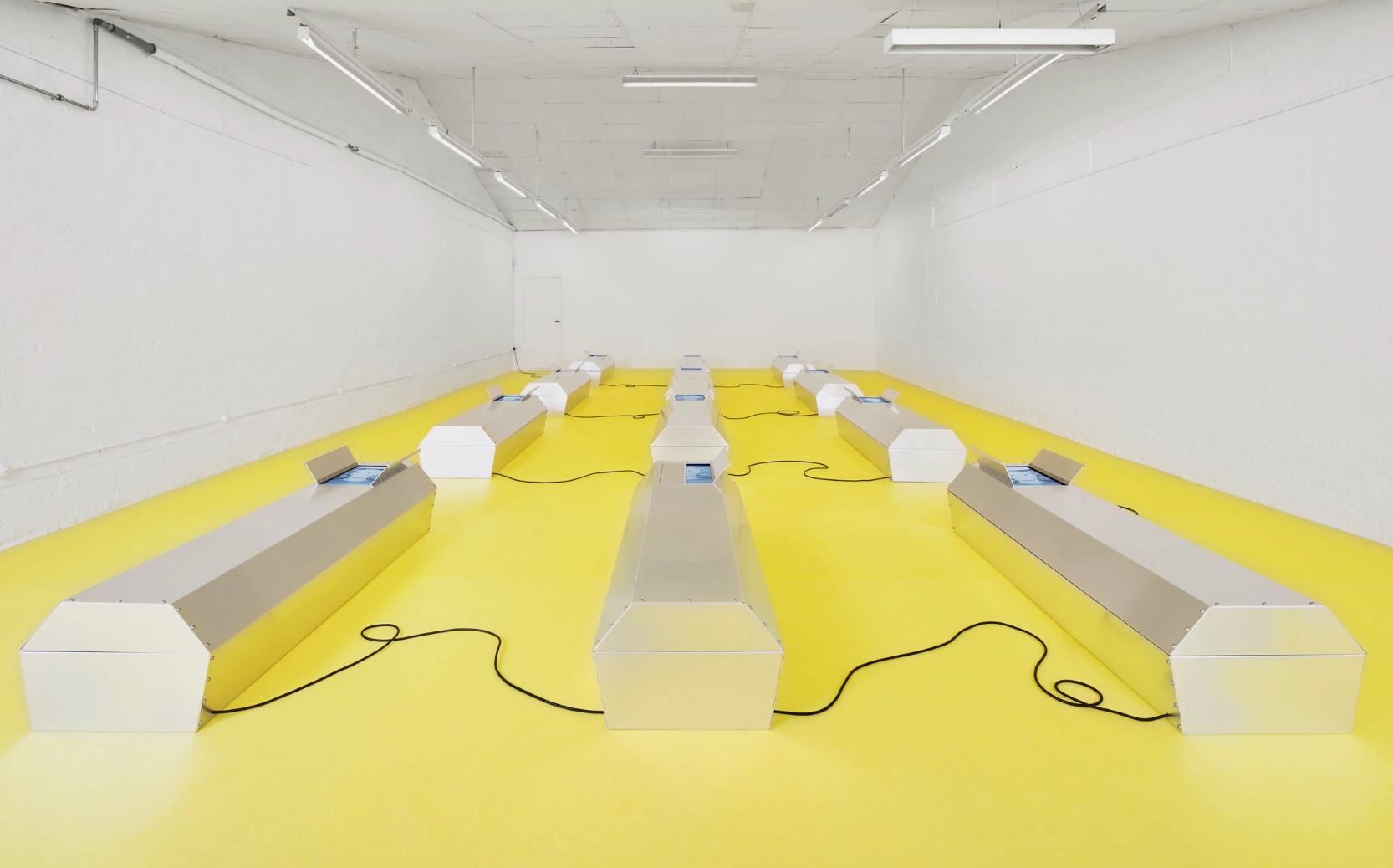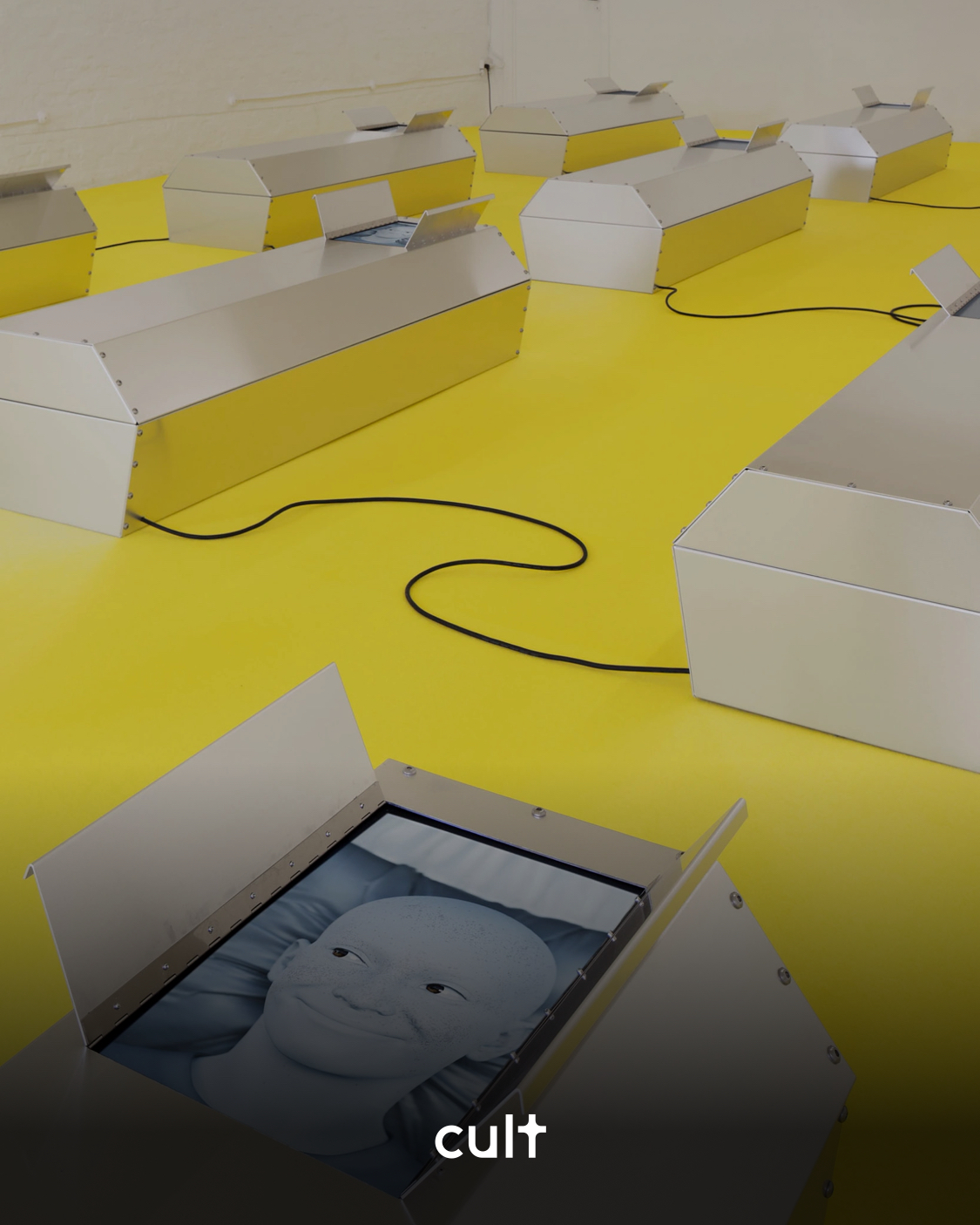In an age where technology increasingly mediates our most intimate experiences, Stine Deja's installation GRAVE MATTERS at Ringsted Galleriet presents a thought-provoking exploration of digital mourning.
The exhibition delves into the concept of "griefbots"—AI-driven avatars that allow the bereaved to interact with digital facsimiles of their deceased loved ones. This intersection of technology and grief challenges our understanding of death, memory, and the human desire for connection beyond mortality.
Upon entering the exhibition, visitors are greeted by a serene yet unsettling atmosphere. A soft carpet invites them to remove their shoes, maintaining only their socks—a gesture that evokes traditional rituals of respect and cleanliness in sacred spaces. The room is adorned with twelve aluminum coffins, each housing a screen displaying the visage of a griefbot. These digital faces, washed out and overexposed, smile with an uncanny warmth, their eyes reminiscent of medieval art where eyes served as portals to the divine.
The ambient soundscape combines chirping birds and organ tones, blending elements of nature and spirituality. This auditory backdrop creates a simulated temple, where the digital and the sacred converge. Deja's installation prompts visitors to reflect on the authenticity of these digital resurrections and the implications of seeking solace in artificial simulations.
The concept of griefbots is not purely speculative. Technological advancements have made it possible to create AI chatbots that mimic the speech and personality of the deceased, offering a form of digital immortality. While these innovations provide comfort to some, they also raise ethical concerns about consent, authenticity, and the potential commodification of grief.
Deja's work situates itself within this complex discourse, neither fully endorsing nor condemning the use of griefbots. Instead, GRAVE MATTERS serves as a contemplative space, inviting visitors to confront their own feelings about death, memory, and the role of technology in our emotional lives. The exhibition challenges us to consider whether digital simulations can truly replace the nuanced, often painful process of mourning, or if they merely offer a convenient escape from the finality of death.









